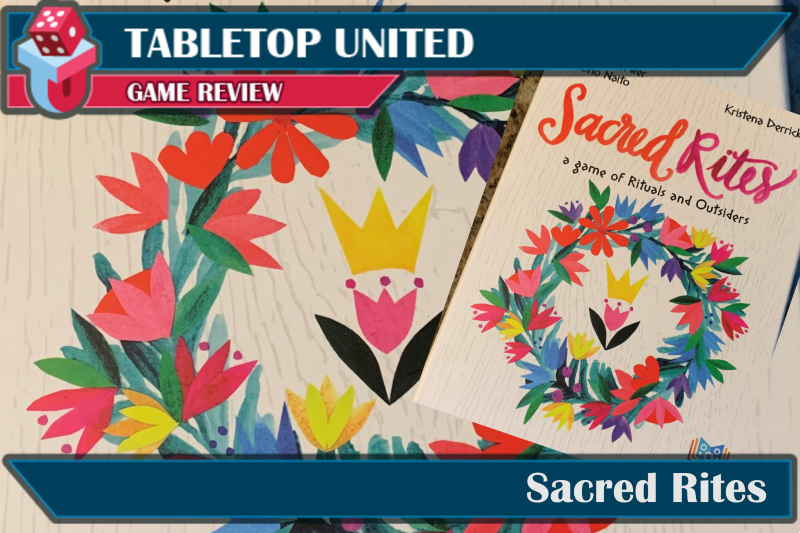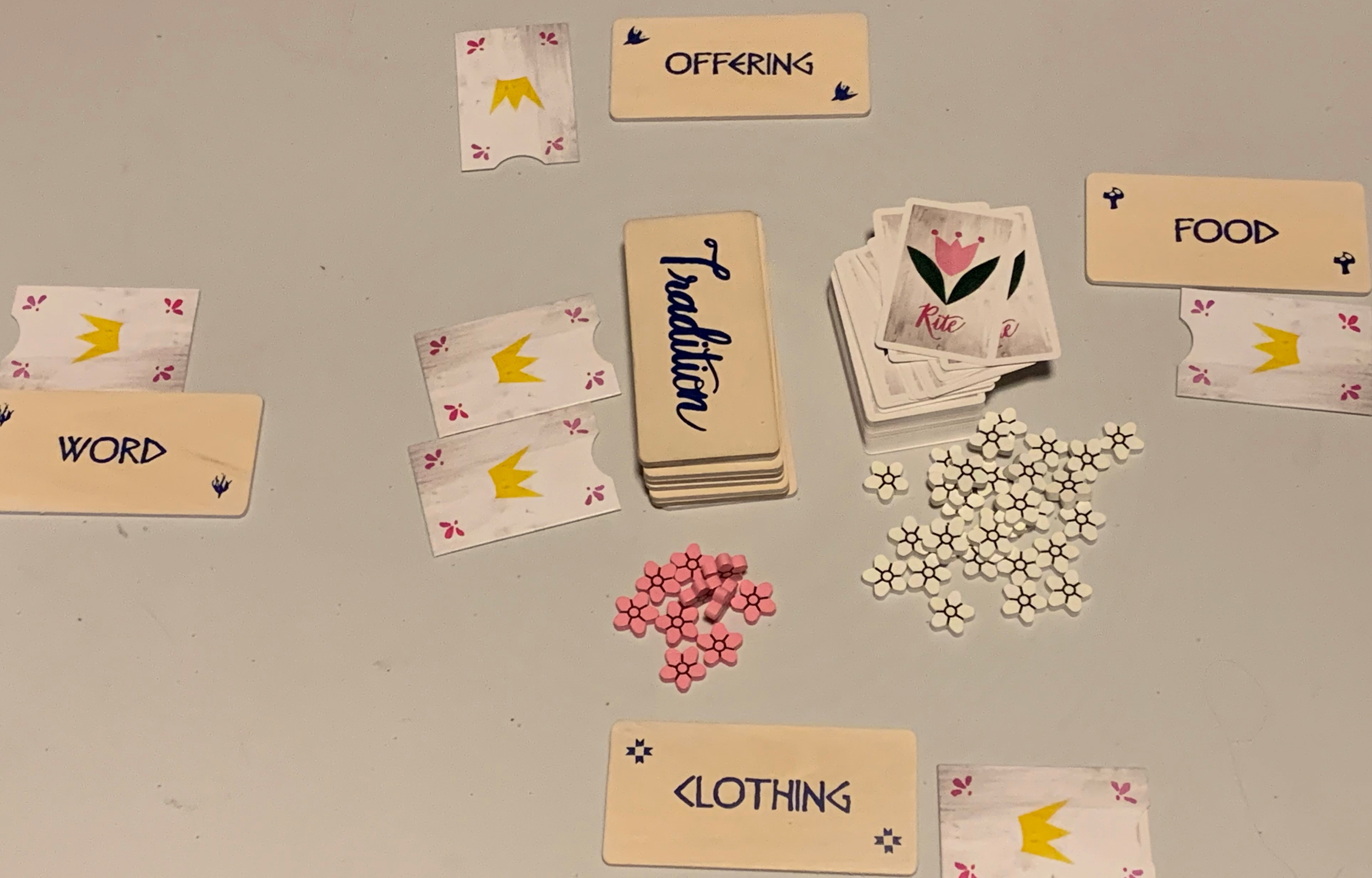
Sacred Rites
Designer: Julia Koerwer and Jono Naito
Artist: Kristena Derrick
Publisher: Story Machine Games
Year Published: 2020
No. of Players: 3–9
Ages: 8+
Playing Time: 30 minutes
Main mechanic / Theme: Bluffing and deduction
Can you bluff your way into the inner circle?
Find more info on BoardGameGeek.com
Overview
Sacred Rites by Julia Koerwer and Jono Naito involves bluffing and detection. Every player will probably be an Outsider at some point trying to hide and a Believer other times who is making sure no Outsiders participate in the ritual. These are not dark rituals. They are simple ideas that we talk about all the time.
Set up for for (flowers are for scorekeeping)
Gameplay and mechanics
Sacred Rites is played in rounds. Each round, players select an envelope that will allow them to know they are either an Outsider or a Believer. There can be up to two Outsiders, but everyone might also be Believers. This gives everyone the opportunity of being on both sides of the bluff during the game.
After players draw their envelopes for the round, one player draws a Rite card and slides it in their envelope. Believers will be able to see the Rite through a window in the envelope while Outsiders have a solid envelope. The card is passed around so every player can slide it into the envelope they have for the round. Rites are general concepts like fire, love, travel, and moon.
Every player then draws a random Tradition tile. Traditions give another level of information for the player. Traditions include concepts like movement, shape, and season. The Rite and the Tradition are combined to create a clue.
Each player gives a clue about the Rite by referencing the Tradition they have drawn. There is no order to how the clues are given, which can be part of your strategy. The Tradition is revealed so everyone knows what Tradition you are linking to the Rite. Believers must give a clue that is specific enough to show they have a link, so other Believers understand, and vague enough to not let Outsiders know what the Rite is. Outsiders also give a clue, but they must bluff the Believers into believing they know the Rite.
These are the only clues given. There is no other communication, hints, etc.
After everyone has given a clue, on the count of three every player point at who they think the Outsider is, or up to indicate no Outsiders are in the round. Correct assumptions earn two points, which includes Outsiders pointing at themselves. Every non-accused player (no one pointed at them) earns a point. After identifying the Outsiders in the round, those players get one guess at what the Rite is. They score two points if they guess the Rite.
Play another round until one player scores thirteen points.
What worked
Sacred Rites is a light game for social interaction.
Final thoughts
We had four players. The style of play would work better with more people. There is a strategy of when to give your clue to, and how you give it. Some rounds went quicker than others. But with the structure being of only giving one clue and then everyone guessing without the benefit of going through the details they all lasted about the same length of time.
On some rounds, it was clear when someone really missed the mark on their bluff. Other rounds were harder to figure out who was, if there was one, the Outsider. The fun really took over between the rounds as everyone was joking about the clues given.
Sacred Rites was easy to learn, and it didn’t take long to start our first game. The box I received has an age rating for 13+. I don’t think the age rating needs to be as high as it is. The only area where this may be considered necessary is being able to create a clue based on the tradition. More experienced younger players and those who have read more will probably be able to come up with applicable, subtle clues. In fact, on Board Game Geek the game is listed for 8+.
About the Author
Daniel Yocom does geeky things at night because his day job won't let him. This dates back to the 1960s through games, books, movies, and stranger things better shared in small groups. He's written hundreds of articles about these topics for his own blog, other websites, and magazines after extensive research along with short stories. His research includes attending conventions, sharing on panels and presentations, and road-tripping with his wife. Join him at guildmastergaming.com.





